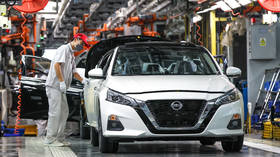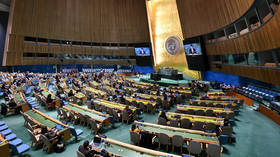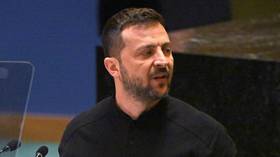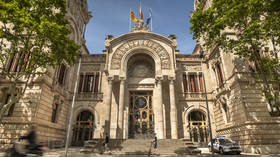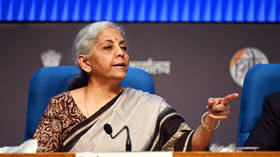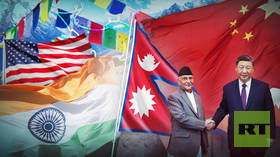G20: Time to switch to economic slowdown

With a high risk to be overshadowed by Syria, the upcoming G20 summit in Saint Petersburg will become a crucial test for the comprehensive multilateral mechanism for regulating global economic growth and development, known as the Group of Twenty.
While what is at stake in the Syrian crisis is the fate of the war-torn Arab nation - facing an almost inevitable US military strike - the Saint Petersburg summit surprisingly raises the stakes even higher.
What is to be decided in Saint Petersburg is the future of economic crisis management and the very foundations of the global economy, if one describes the G20 “as a process, and not a single event,” to quote Russian Deputy Finance Minister Sergey Storchak. Those are the issues which lay foundation for the well-being of the billions of citizens of this increasingly interdependent world, shared by all of us. Not just the “golden billion” of citizens of the Western world who are watching the plight of the underprivileged and underdeveloped from a safe distance, like they watch the Syrian havoc.
On the eve of the Saint Petersburg G20 forum it is not only Syria that looks like a major divisive issue between the US and the most vocal opponents of the military strike against Damascus. Washington is also at odds with the major emerging economies, represented by BRICS states, on the performance of US Federal Reserve which is currently winding down its program of quantitative easing, known as QE.
When the United States got embroiled in a financial crisis of its own making in 2008, which triggered a tsunami of economic recession worldwide from September 2009, US Fed introduced a QE stimulus package program by pumping billions of dollars into the US economy. The QE program not only led to US economic recovery and enabled America to regain its position as a safe destination for investors, but also served as a stimulus for the growth of newly-emerging economic powerhouses.
However, as the American economy recovers, the US Fed decided to stop injecting dollars into the economy as the investors’ confidence was restored. Investors finally found the US a better destination and a better bargain than some of emerging economies like India, Brazil, Indonesia and Malaysia. Consequently, the currencies of these economies started to free fall against the US dollar. It is at that point that emerging economies ceased to clock a far better growth rate than most Western nations and were hit very badly.
“The biggest concern is going to be the slow growth. There has been some slowdown in almost all developing countries and we need to discuss sources of long term growth," explains Ksenia Yudaeva, Russia's sherpa for the Saint Petersburg G20 summit. According to Ms Yudayeva, in the wake of emerging economies decline, the US Federal Reserve’s intention to scale down monetary easing looks like a dramatic shift from the former US policy. It is seen as a worrisome signal by some of the countries, as initially the emerging economies welcomed the stimulus policy, introduced by the US Central bank.
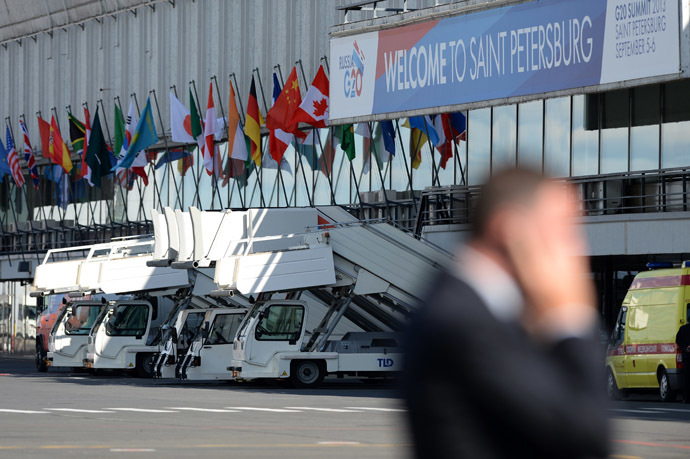
Ksenia Yudayeva’s thoughts are seemingly echoed by Chris Weafer, co-founder of Moscow-based consultancy Macro Advisory. "The leaders in the emerging markets will be demanding that the Fed unwind its QE program taking into account the collateral damage as much as its US domestic interest," Weafer said.
The reason for the new economic tigers’ concern is not groundless: reducing the QE program to zero, as announced by the US Federal Reserve stimulates the demand for dollars. And a strong dollar is a big problem for the sinking rupee, rial and other troubled currencies of the emerging markets.
The most telling example of that “collateral damage” is present-day India, suffering decade-low growth, while the country’s national currency – the rupee – continues its free fall by hitting one “historic low” after another. Once the pride of the country’s fast growing economy and the symbol of its success story, the rupee hit the lowest point in independent India’s 67-year history last week. It’s a development that one could never have imagined even in the wildest of dreams.
The plight of the rupee came as a shock to hundreds of millions of Indians – mostly rural folk and low-income social groups - as well as to India’s middle class, which has already enjoyed the sweet fruits of liberal economic reforms and saw India as another economic giant of Asia, along with China, cutting corners to become a global economic powerhouse. It has also raised eyebrows among financial gurus and economic experts who until recently saw no warnings of the rupee’s decline.
The current Indian financial crisis is being compared to the 1991 crisis when the Indian economy had tanked to its worst imaginable depths. In 1991 India had infamously slid to the worst-ever external payment crisis when Indian foreign exchange reserves had plummeted to an all time low and were enough for less than two week of imports.
The gravity of the situation can be illustrated by the following quote from India’s Finance Minister K. Chidambaram: “If I have one wish which the people of India can fulfill, it is don’t buy gold. Every ounce of gold is imported. You pay in rupees. We have to provide dollars.”
India is not the only non-Western economy to struggle with the
dramatic slowdown of economic growth and devaluation of its
currency. The alarming trend can also be seen in Brazil with its
national currency – the rial has nose-dived to its lowest point
in the last five years. The perils of the Brazilian economy have
triggered mass protests over growing prices and the deteriorating
socio-economic situation throughout the country.
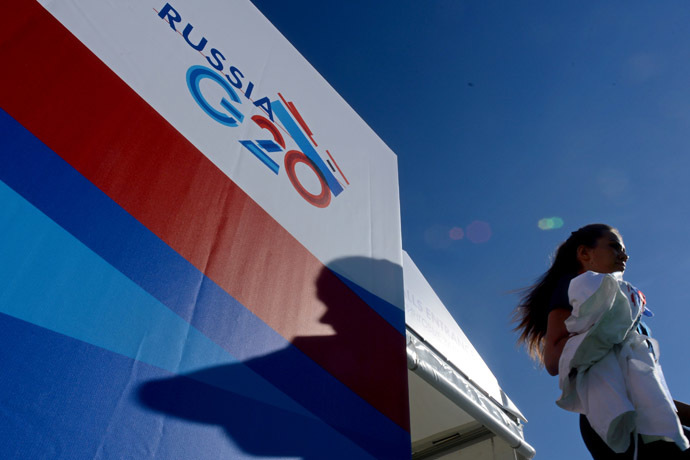
Russia and China’s economic performance looks to be less affected by the slowing growth - but their economies are by no means immune to such declines. Days before the Saint Petersburg summit, the Russian government has reduced its full-year growth forecast to 1.8 per cent from 2.4 per cent. China’s rates are also going down.
So, this is a time when the United States should really show the ability to act in a truly responsible way as a global economic powerhouse, being fully aware of the impact of QE on the global financial system as a whole and financial markets of emerging economies. Washington should act on the basis of undeniable realities, seen not only by economic gurus, but also by the ordinary folks – those who can’t feed on politics but long for salaries, jobs, and a decent living.
The Saint Petersburg forum has a lot of work to do to iron down the differences on the issues of US stimulus, seen between the G20 emerging economies and Western financial institutions - namely the US Central bank and the European Central Bank.
The gap is not as large as it is believed to be. On the eve of the Saint Petersburg forum, Canadian Prime Minister Steven Harper – who is probably the most pro-American leader in Canadian history - hinted that the priority issues of the G20 meeting should be stimulating economic growth and creating jobs. “Right now we're expecting to talk about the global economy, that's the priority right now for the G20 meeting, and it’s important to continue with a discussion of the economy,” Harper's chief spokesman, Andrew MacDougall, said.
Russia has assumed the presidency of the Group of Twenty (G20) for the first time this year in a development underscoring the most drastic transformation of the post-cold war world. It is highly symbolic that the venue of the forum is a former citadel of the Bolshevik revolution. Established in the wake of the 2008 global economic meltdown, the G20 has still to show it is not a paper tiger but a comprehensive mechanism for joint efforts by the Western and major Asia-Pacific powers as well as South America’s and Africa’s rising economic giants.
The statements, views and opinions expressed in this column are solely those of the author and do not necessarily represent those of RT.
The statements, views and opinions expressed in this column are solely those of the author and do not necessarily represent those of RT.




